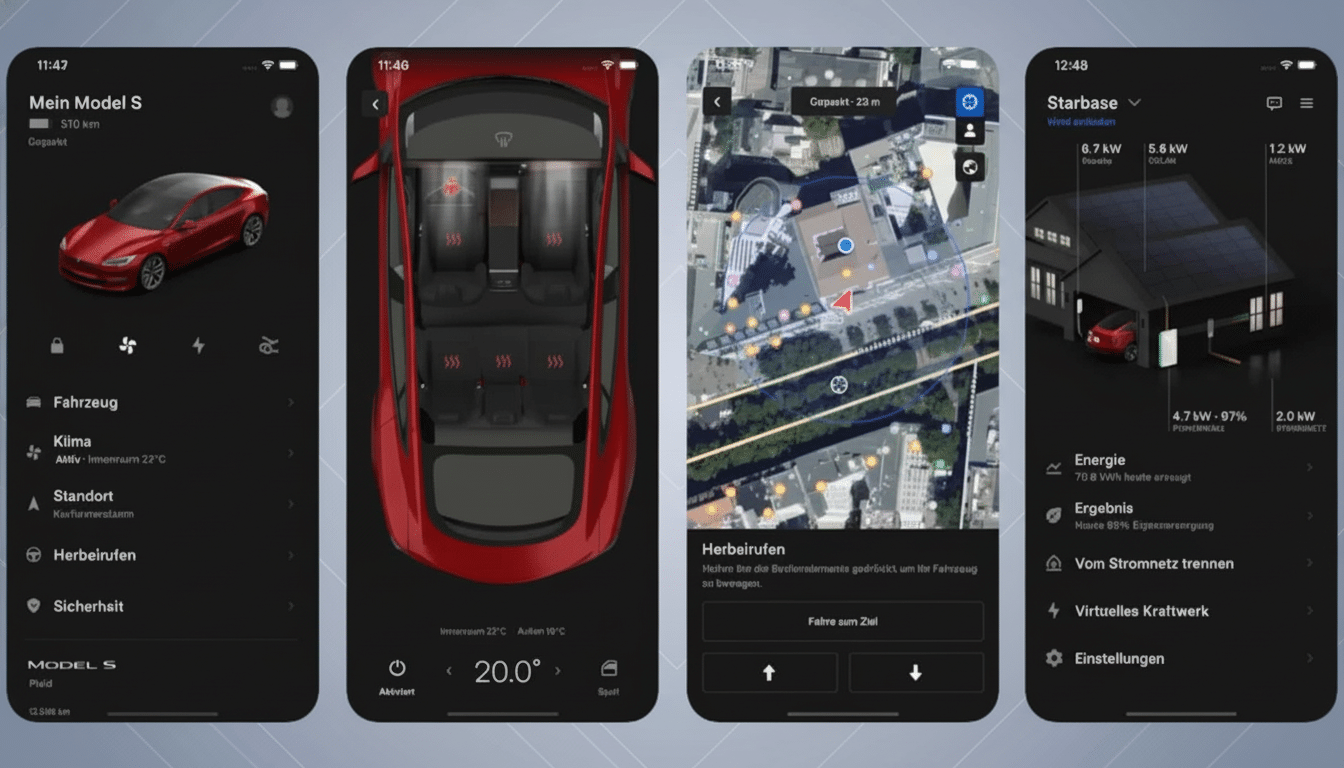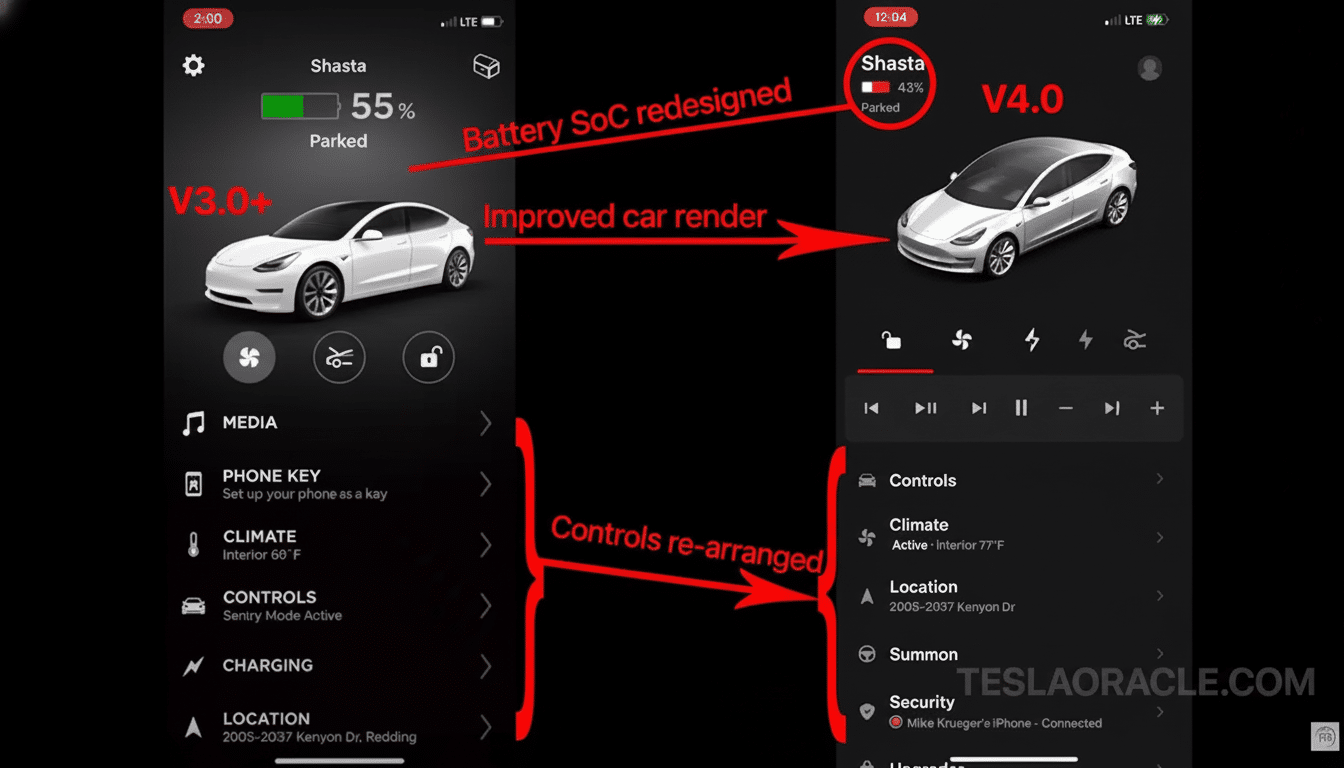Tesla has started to roll out a new Maintenance section in their iOS app that lays out, piece by piece (literally), what your car will need next and when — approximately. In addition to reminders, the app has a feature that displays remaining-life estimates on wear items and gives members a rough estimate of service pricing at Tesla showrooms before going in for appointments. The feature seems to be iOS-only — Android availability hasn’t yet materialized in owner reports.
How the New Maintenance Tab Works in the Tesla App
Owners can access the feature by opening Service, selecting Request Service and then tapping Maintenance. The page has checkmarks for activities like tire rotation, cabin air filter replacement, wiper blade swaps, checking the brake fluid and (on some models) servicing the HEPA filter. Each item has an estimate of time or miles remaining, and a tap-through detail view with pricing at service centers along with options for scheduling.

Some of the entries have more to them than just the basics. Among those are “windshield camera area precision cleaning” — which seems to refer to fingerprints or debris around the driver-assistance camera housing; the app and website charge a typical price of about $80. It’s also a reminder that maintaining modern vehicles now often means tending to sensors for features like Autopilot and collision warnings.
What Tesla Monitors And How It Estimates
The app synchronizes with your car based on the calendar periods. Tesla’s official guidance is to rotate tires every 6,250 miles (or if tread depth on tires differs by 2/32 inch), replace the cabin filter about every two years for Model 3/Y or three years for those with S/X with HEPA, and inspect brake fluid health every two years with fluid replacement as needed. Those suggestions serve as the schedule’s bedrock, while odometer readings, driving habits and prior service history help fine-tune the timing that you see in-app.
For owners, this means fewer guesswork trips and a greater idea of when to double up errands — so maybe time your filter change with rotation, for instance. And it gently pushes the timely upkeep of a few other items that EV drivers might ignore, such as wiper blades, which deteriorate more quickly in intense heat or cold and can impair your field of vision long before they become useless.
The larger payoff is cost restraint. Electric vehicles in general rack up roughly half the maintenance and repair costs of similar gas models over time, according to Consumer Reports, mostly as a result of fewer moving parts and no oil changes. Tires and filters, plus a brake system check, remain the notable exceptions. By quantifying what’s coming due, the Tesla app helps owners look ahead, instead of reacting to the invoice.

Limitations and availability across regions and devices
Provisional use suggests the feature is available, at least on the iOS app, and still rolling out by location. Some owners see lengthy lists of specific services and prices; others, shorter ones or generic intervals. Pricing seems like it might be location-dependent; prices may differ at service centers. It was first observed by Tesla-following blogs and owner communities, however, and Tesla has not provided an official release note detailing the roll-out schedule.
There is a caveat, though: if you have maintenance done outside of the Tesla network, the app might not alert you about that work. Currently, owners claim there is no manual process to enter third-party maintenance and that it can trigger reminders for work already performed. For DIYers and independent shop customers, a simple input tool or receipt upload would close that loop.
How it compares and why it matters for owners
Automaker apps for companies like BMW, Mercedes-Benz, Ford and GM also provide users with maintenance schedules and the ability to book a service; but Tesla, we discovered today, is distinctive in providing itemized cost estimates along with remaining-life estimates, all within one request-flow. It aligns with Tesla’s service-lite ethos — run as few cars in for no reason, show you what needs doing when it needs doing and encourage use of Mobile Service where we can.
Expect the feature to expand. But if the tool were able to be more tightly integrated with parts ordering, better reflect regional pricing and provide proactive notifications somewhat tied to driving conditions, it’d be that much more useful. More transparency also gels with increasing right-to-repair expectations: the more information owners have about what’s required and why, the easier it is to decide between a Tesla center, a mobile visit or an independent shop they trust.
For now, the new Maintenance tab makes the Tesla app a more useful digital hub for owners. Rather than trolling through service PDFs or playing guessing games with intervals, owners can turn to a living list that is reflective of their car’s mileage and use, one they adjust (or better yet, take action on) in step with it — optimally, before squeaky wipers or uneven tread make the decision for you.

